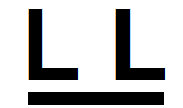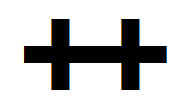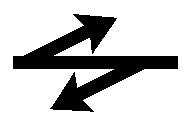GEN 3.6 Search and rescue (SAR)
GEN 3.6.1 Responsible service
Croatia Control Ltd. shall initiate search and rescue procedure, by alerting the central state administration body responsible for search and rescue and informing the Investigation Agency. The Investigation Agency shall inform the operator or the owner of the aircraft and the competent authority of the aircraft registration country. Search and rescue actions shall include all aircraft pursuant to air traffic control, other aircraft that have submitted flight plan or aircraft that are in a way known to the authorities for the provision of services in air navigation, and aircraft that are threatened or are subjected to an act of unlawful interference.
The addresses and telephone numbers are as follows:
- SEARCH AND RESCUE CO-ORDINATION CENTREPost:
MINISTRY OF THE INTERIOR OF THE REPUBLIC OF CROATIA - CIVIL PROTECTION DIRECTORATE
Nehajska 5 10000 Zagreb CroatiaTel:+385 1 6192929
+385 1 4551792
+385 1 4814911Fax:+385 1 4551796
MARITIME RESCUE COORDINATION CENTRE RIJEKA – MRCC
Post:Senjsko pristaniste 3
51000 Rijeka
CroatiaTel:+385 1 195
Fax:+385 51 312254
Email:mrcc@pomorstvo.hr
- ALERTING SERVICEPost:
CROATIA CONTROL Ltd. AREA CONTROL CENTRE ZAGREB Rudolfa Fizira 2 10410 Velika Gorica, P.O.B. 103 Croatia
Tel:+385 1 6259309
+385 1 6259296
+385 1 6259504Fax:+385 1 6259242
AIR, MARITIME AND RAILWAY TRAFFIC ACCIDENTS INVESTIGATION AGENCY
Lonjicka 2Radnicka 177
10000 Zagreb
Croatia
Tel:+385 1 8886830
+385 99 8071301 (mobile phone)
Fax:+385 1 8886831
The service is provided in accordance with the provisions contained in ICAO Annex 12 - Search and Rescue.
GEN 3.6.2 Area of responsibility
The search and rescue service is responsible for SAR operations within the territory of Republic of Croatia under the conditions and in the manner determined by the Air Traffic Act and the regulations adopted on the basis of this Act.
It covers the territory of the Republic of Croatia as defined and reported to ICAO by the ministry responsible for transport and may include the territory defined by international agreements to which the Republic of Croatia is signatory.
When it is certain that the air accident occurred at sea, the maritime area includes the internal sea waters and the territorial sea of the Republic of Croatia and the open sea area between the territorial sea and the line established by interstate agreements between the Republic of Croatia and neighboring countries as reported to the International Maritime Organization (IMO).
GEN 3.6.3 Types of services
Depending on the scale, conditions and in accordance with their duties, armed forces units of the Republic of Croatia are also available for search and rescue missions, as well as corporate legal persons and individual persons. All aircraft are amphibious and carry survival equipment, capable of being dropped, consisting of inflatable rubber dinghies equipped with medical supplies, emergency rations and survival radio equipment. Aircraft and marine craft are equipped to communicate on 121.500 MHZ, 123.100 MHZ, 243.000 MHZ, 500 KHZ, 2182 KHZ and 8364 KHZ.
Ground rescue teams are equipped to communicate on 121.500 MHZ, 500 KHZ and 8364 KHZ. SAR aircraft and marine craft are equipped with direction-finding equipment and radar.
GEN 3.6.3.1 Table - Search and Rescue Units
Nil
GEN 3.6.4 SAR agreements
Nil
GEN 3.6.5 Conditions of availability
Nil
GEN 3.6.6 Procedures and signals used
GEN 3.6.6.1 Procedures and signals used by aircraft
Procedures for pilots-in-command observing an accident or intercepting a distress call and/or message are outlined in ICAO Annex 12, Chapter 5.
GEN 3.6.6.2 Communications
Transmission and reception of distress messages within the Zagreb Search and Rescue Area are handled in accordance with ICAO Annex 10, Volume II, Chapter 5, paragraph 5.3.
For communications during search and rescue operations, the codes and abbreviations published in ICAO Abbreviations and Codes (Doc 8400) are used. The frequency 121.500 MHZ is guarded continuously during the hours of service at all area control centres and flight information centres. In addition, the aerodrome control towers serving international aerodromes and international alternate aerodromes will, on request, guard the frequency 121.500 MHZ. All coast stations guard the international distress frequencies.
Rescue aircraft belonging to permanent Search and Rescue Units use both the call sign RESCUE and additional identification marks (ALFA, BRAVO, CHARLIE, etc.) during rescue operations.
GEN 3.6.6.3 Search and rescue signals
The search and rescue signals to be used are those prescribed in ICAO Annex 12, Chapter 5, paragraph 5.10. and shown in the following tables.
Ground/air visual signal codes for use by survivors
| No. | Message | Code symbol |
Instructions for use:
| ||
| 1 | Require assistance |  |
| 2 | Require medical assistance |  |
| 3 | No or Negative |  |
| 4 | Yes or Affirmative |  |
| 5 | Proceeding in this direction |  |
Ground/air visual signal codes for use by SAR service
| No. | Message | Code symbol |
| 1 | Operation completed |  |
| 2 | We have found all personnel |  |
| 3 | We have found only some personnel |  |
| 4 | We are not able to continue. Returning to base |  |
| 5 | Have divided into two groups. Each proceeding in direction indicated. |  |
| 7 | Information received that aircraft is in this direction |  |
| 8 | Nothing found. Will continue to search. |  |